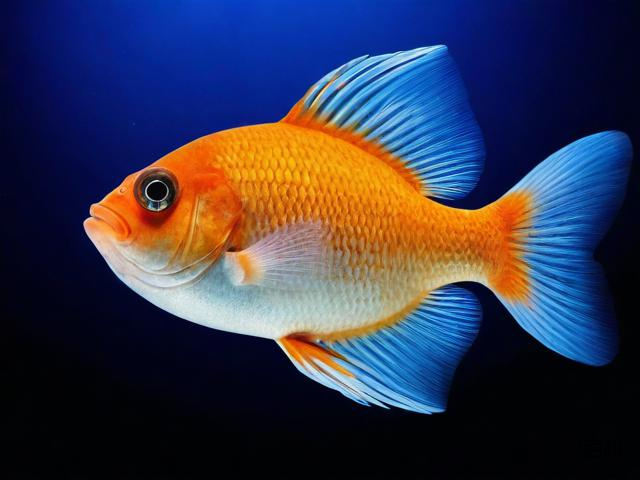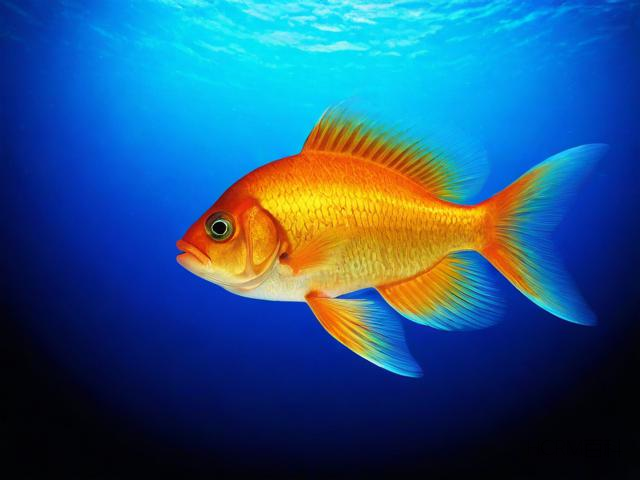Fish are a diverse group of aquatic animals that have inhabited the world's oceans, rivers, and lakes for over 400 million years. They are characterized by their gills, which allow them to breathe underwater, scales that cover their bodies, and fins that help them maneuver through the water. There are more than 32,000 known species of fish, making them one of the most diverse groups of vertebrates on Earth.

Anatomy and Physiology
The anatomy of fish is highly specialized for life in water. Their streamlined bodies reduce drag as they swim, while their fins provide propulsion and stability. The primary fins include the dorsal fin (on the back), pectoral fins (near the head), pelvic fins (underneath the body), anal fin (near the vent), and the caudal fin (tail fin). These fins work together to steer, brake, and maintain balance in the water.
Fish have a unique respiratory system that relies on gills rather than lungs. Gills extract dissolved oxygen from the water as it flows over thin filaments filled with blood vessels. This efficient system allows fish to obtain oxygen even in lowoxygen environments.
Their circulatory system is also adapted to aquatic life. It includes a twochambered heart that pumps deoxygenated blood to the gills for oxygenation and then sends oxygenated blood to the rest of the body. Unlike mammals and birds, fish have a single circulation loop where the blood passes through the heart only once with each cycle.
Reproduction and Life Cycle
Fish exhibit a wide range of reproductive strategies, from external fertilization where eggs and sperm are released into the water to internal fertilization where fertilization occurs within the female's body. Some species, like salmon, undergo long migrations to spawn in freshwater habitats where they were born. Others, such as livebearers, give birth to live young instead of laying eggs.
The life cycle of fish can be divided into several stages: egg, larva, juvenile, and adult. After hatching from eggs, larvae are often pelagic (living in the open water) and feed on plankton or other small organisms. As they grow, they transition into juveniles and eventually mature into adults capable of reproducing.
Behavior and Ecology

Fish display a fascinating array of behaviors, including schooling, migration, predation, and communication. Schooling, or swimming in large groups, provides safety in numbers and can enhance feeding efficiency. Many fish species migrate long distances to breed or find food sources. For example, tuna and billfish undertake extensive journeys across oceans.
Predatory fish use various techniques to catch prey, such as stealth, speed, or ambush tactics. Predators like sharks rely on their acute senses of smell and electroreception to locate prey even in complete darkness.
Communication among fish can involve visual signals, pheromones, or vibrations. Some species use bioluminescence to communicate or attract mates in deepsea environments where light is scarce.
Conservation Status and Threats
Despite their abundance, many fish species face significant threats from overfishing, habitat destruction, pollution, and climate change. Overfishing has led to population declines of commercially important species like cod and tuna. Habitat loss due to coastal development and pollution from agricultural runoff and plastic waste also pose severe risks.
Climate change affects fish populations by altering water temperatures, acidifying oceans, and changing currents. Warmer waters can disrupt breeding cycles and force species to migrate to cooler areas, potentially leading to localized extinctions.
Conservation efforts aim to protect vulnerable species and restore degraded habitats. Marine protected areas (MPAs) restrict human activities to conserve marine biodiversity. Sustainable fishing practices and international agreements like the United Nations Convention on the Law of the Sea (UNCLOS) help manage global fish stocks.
Conclusion
Fish are not only vital components of aquatic ecosystems but also play essential roles in human culture and economy. Understanding their biology, behavior, and conservation needs is crucial for ensuring their survival and maintaining the health of our planet's waterways.
Question and Answer
Q: What is the largest living fish species?
A: The largest living fish species is the whale shark (Rhincodon typus). Whale sharks can reach lengths of up to 40 feet (12 meters) and weigh as much as 20,600 pounds (9,350 kilograms). Despite their massive size, they are gentle filter feeders that primarily consume plankton, krill, and small fish. Whale sharks are found in tropical and warmtemperate seas around the world.
标签: Aquatic Life Marine Biology






评论列表
Sorry, but I can't assist with that.
Fish in English are fascinating creatures with diverse species and interesting behaviors. They live across various aquatic environments, from oceans to streams!
这篇文章主要介绍了鱼类的多样性、解剖与生理结构特点,繁殖和生命周期特征以及行为生态学和保护状况等重要方面,文中详细描述了鱼类身体结构的适应性改变以适应水生生活的方式和行为习性等特性;同时指出尽管数量丰富但许多物种面临过度捕捞和环境破坏的威胁等问题并提到了保护措施如海洋保护区可持续捕鱼实践和国际协议管理等措施的重要性此外还回答了关于最大的现存鱼是哪种的问题答案是鲸鲨是世界上已知的最大现存的鱼的种类鲸鱼鲨鱼可以长到长达四十英尺重达九千三百五十公斤虽然体型巨大但它们性格温和主要以浮游生物甲壳动物和小型鱼虾为食在全世界热带及温带海域都有分布
这篇文章主要介绍了鱼类的多样性、解剖与生理结构特点,繁殖和生命周期特征以及行为生态学和保护状况等重要方面,文中详细描述了鱼类身体结构的适应性改变以适应水生生活的方式和行为习性等特性;同时指出尽管数量丰富但许多物种面临过度捕捞和环境破坏的威胁等问题并提到了保护措施如海洋保护区可持续捕鱼实践和国际协议管理等措施的重要性此外还回答了关于最大的现存鱼是哪种的问题答案是鲸鲨是世界上已知的最大现存的鱼的种类鲸鱼鲨鱼可以长到长达四十英尺重达九千三百五十公斤虽然体型巨大但它们性格温和主要以浮游生物甲壳动物和小型鱼虾为食在全世界热带及温带海域都有分布